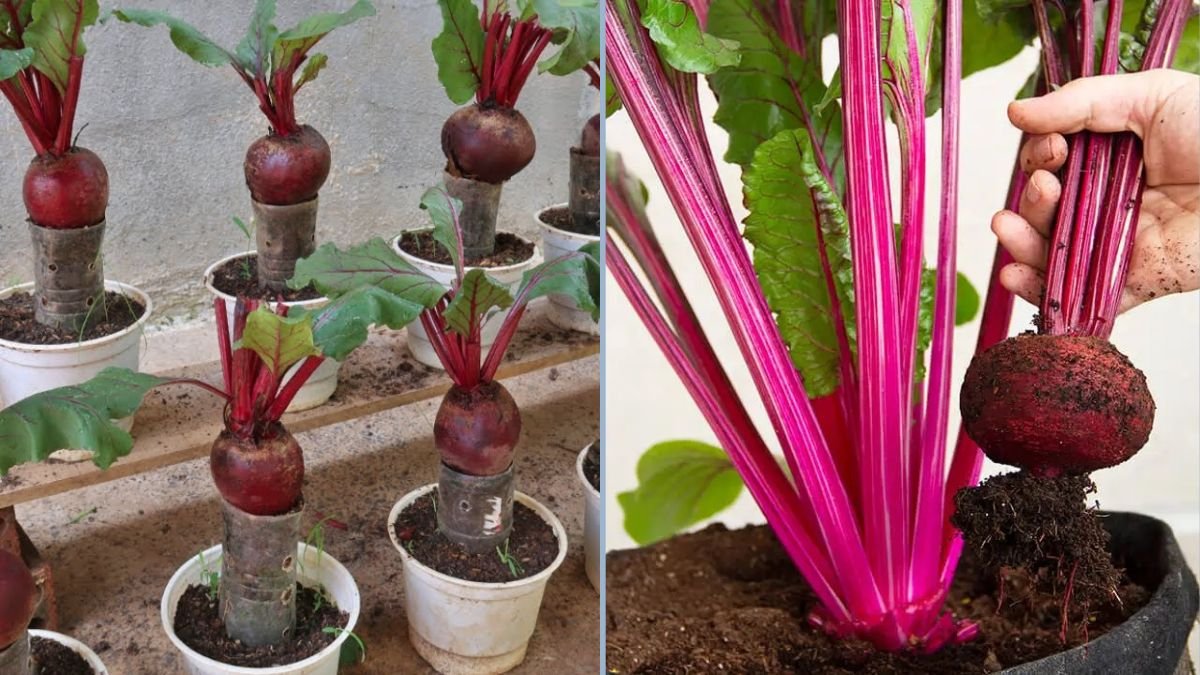Beetroot is a nutrient-packed root vegetable known for its deep red color, sweet earthy flavor, and impressive health benefits. Whether you’re looking to improve your heart health, boost stamina, or simply enjoy fresh, organic produce, growing beetroot at home is a fantastic choice. But what if you could grow it in a space-saving, cost-effective way that produces surprisingly great results? This is where plastic bottle gardening comes in.
In this guide, we’ll show you step by step how to grow beetroot in plastic bottles at home, the unexpected results you might see, and tips to maximize your yield. This method is ideal for urban gardeners, small-space dwellers, and anyone interested in sustainable home gardening.
Why Grow Beetroot in Plastic Bottles?
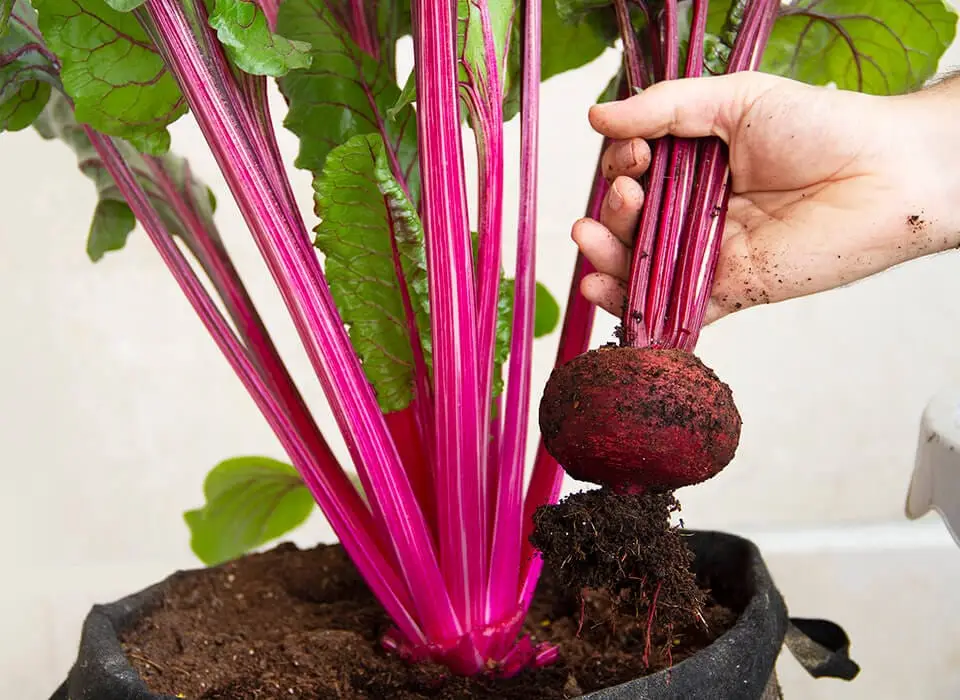
Plastic bottles are readily available and can be repurposed to create an efficient and productive mini-garden. Here’s why growing beetroot in bottles is a smart idea:
- Space-saving: Perfect for balconies, windowsills, or kitchen counters.
- Affordable: You don’t need expensive pots or garden beds.
- Eco-friendly: Repurposes plastic waste while growing fresh food.
- Low-maintenance: A compact setup reduces the need for frequent watering and weeding.
This technique turns an ordinary household item into a productive container, creating a controlled environment that promotes healthy root development.
Materials You’ll Need
To get started, gather the following items:
- Plastic bottles (1–2 liters work best)
- Beetroot seeds or small seedlings
- Potting soil or a mixture of soil and compost
- Organic compost or fertilizer
- Perlite or sand for drainage
- Sharp scissors or a knife
- A tray or plate to catch water
Once you have these materials ready, you’re set to start your home-based beetroot experiment.
Step-by-Step Guide to Growing Beetroot in Plastic Bottles
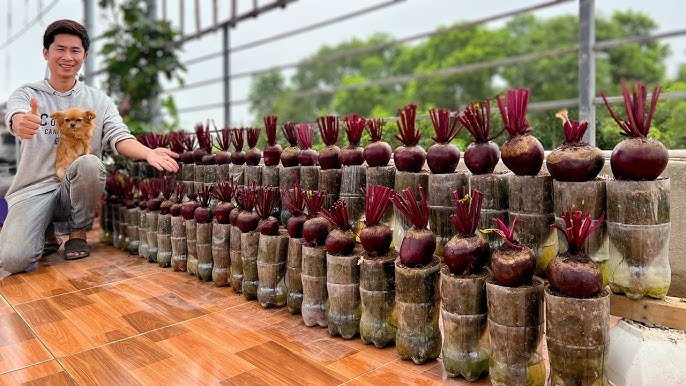
1. Prepare the Bottle
Start by cleaning the bottle thoroughly. Cut it horizontally around one-third from the top. The bottom part will serve as the main container for soil and roots, while the top part can act as a cover to retain moisture.
Next, make small holes in the bottom for drainage. Proper drainage is essential to prevent waterlogging, which can damage beetroot roots.
2. Add the Growing Medium
Fill the bottom section with a mixture of potting soil, compost, and perlite or sand. This combination ensures good aeration, nutrient supply, and moisture retention. Beetroot grows best in loose, well-drained soil, so avoid compacting it too much.
3. Plant the Beetroot Seeds or Seedlings
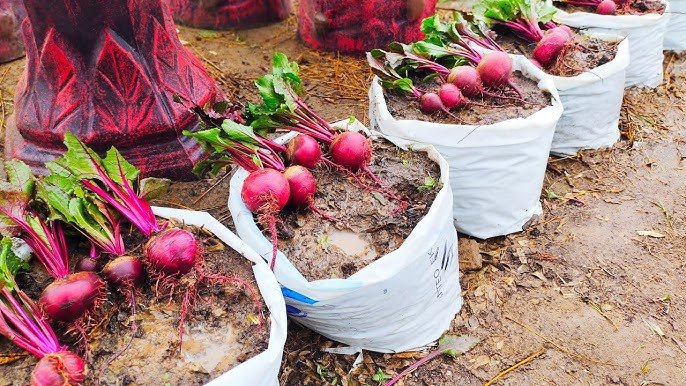
If using seeds, plant them about 1–2 cm deep. Beetroot seeds are usually clustered, so plant them in small groups with some spacing to allow each root to develop fully. If you’re using seedlings, transplant them carefully into the bottle, making sure the roots are fully covered with soil.
Tip: Plant only one or two seedlings per bottle to avoid overcrowding.
4. Create a Mini-Greenhouse
By placing the top part of the bottle upside down over the bottom section, you create a mini-greenhouse effect. This traps moisture and helps maintain a consistent temperature for the soil. The result? Beetroot roots stay hydrated and grow steadily with minimal intervention.
You can also add a small layer of water at the very bottom of the bottle. As it evaporates, it will condense on the bottle walls and trickle back down into the soil, creating a natural self-watering system. This setup reduces the need for daily watering, making it convenient for busy gardeners.
5. Position Your Bottle Correctly
Beetroot thrives in sunlight, needing at least 4–6 hours of indirect sunlight daily. Place your bottle near a window, balcony, or any location that gets sufficient light. If natural sunlight is limited, consider using a grow light for 12–14 hours a day to ensure robust growth.
6. Maintenance and Care
Even though this method reduces watering, you should occasionally check soil moisture. Add water if the soil looks too dry. Fertilizing every 2–3 weeks with an organic liquid fertilizer can promote healthy root growth and leaf development.
Also, keep an eye out for pests. Beetroot can attract aphids or leaf miners. Organic neem oil or a mild insecticidal soap can help manage infestations without harming the plant.
The Surprising Results
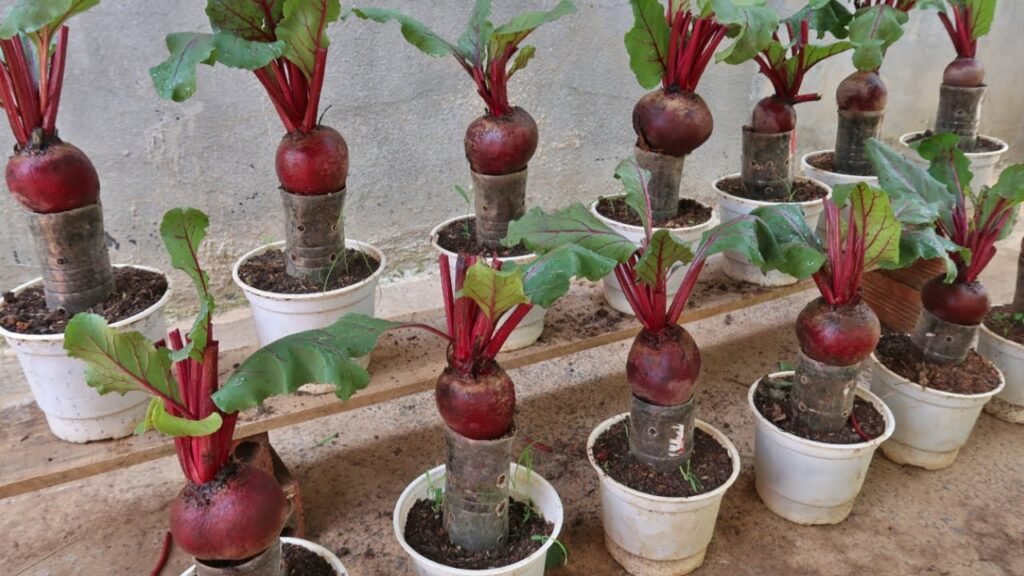
Growing beetroot in plastic bottles at home often yields surprising results:
- Faster Growth: The controlled environment and self-watering system accelerate root development.
- Healthy Roots: The compact bottle encourages strong, round, and uniform beetroot growth.
- Higher Yield: Vertical placement and nutrient-rich soil can produce multiple harvests in a small space.
- Minimal Maintenance: Less watering and easy monitoring make this method low-effort but highly productive.
Many gardeners are surprised at just how well beetroot can thrive in such a small container, producing both vibrant roots and healthy leaves suitable for salads or smoothies.
Tips for Maximizing Your Beetroot Yield
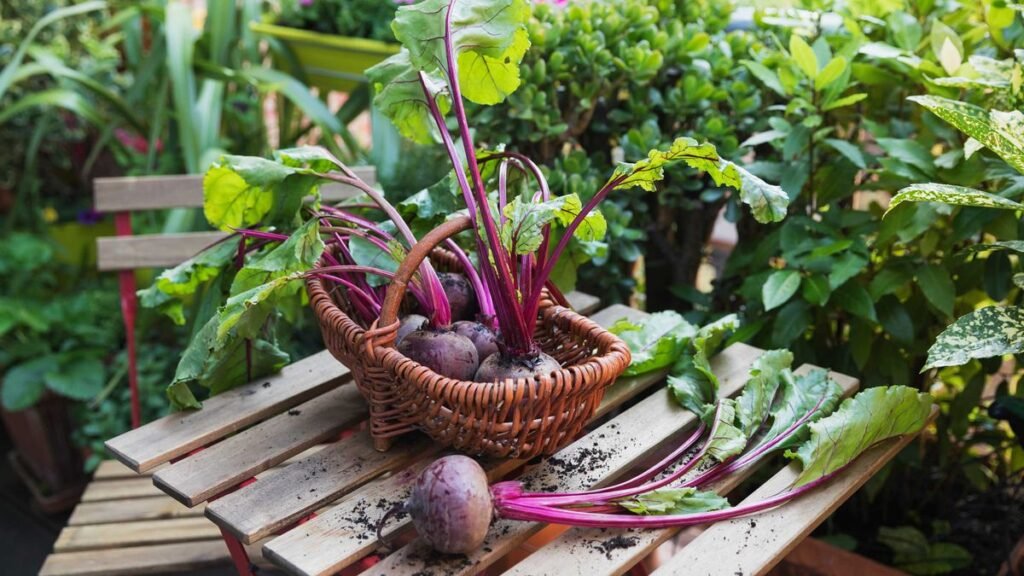
- Rotate the Bottle: Turn the bottle every few days to ensure even sunlight exposure.
- Use Rich Compost: Nutrient-dense soil encourages larger, sweeter roots.
- Prune Leaves: Harvest outer leaves regularly; this allows the plant to focus energy on root growth.
- Pair with Companion Plants: Herbs like mint or basil in nearby bottles can enhance the growth environment.
- Avoid Overcrowding: Give each beetroot enough room to develop properly.
Harvesting Your Beetroot
Beetroot is typically ready for harvest 8–10 weeks after planting, depending on the variety. Harvest the roots carefully by loosening the soil around them. You can also trim the leaves as you go, which encourages continued growth.
The beauty of bottle gardening is that you can continue growing multiple batches in succession, ensuring a steady supply of fresh beetroot for your home.
Benefits of Home-Grown Beetroot
Growing beetroot at home in plastic bottles provides several advantages:
- Freshness: Home-grown beetroot is more flavorful and nutritious than store-bought.
- Sustainability: Reusing plastic bottles reduces waste and supports eco-friendly practices.
- Convenience: Small, self-contained bottles fit easily in apartments or small gardens.
- Health Benefits: Beetroot is packed with vitamins, minerals, and antioxidants that promote heart health, improve stamina, and support detoxification.
Final Thoughts
Plastic bottle gardening is more than a fun experiment—it’s a practical solution for anyone looking to grow nutritious vegetables at home with minimal space, cost, and effort. Beetroot, with its vibrant color, health benefits, and adaptability, thrives in this setup, often producing surprisingly impressive results.
By following these simple steps, you can turn ordinary plastic bottles into a productive, sustainable mini-garden. This method not only provides fresh beetroot for your meals but also demonstrates how creativity and sustainability can come together in urban gardening.
Start with one bottle today, observe the growth, and you may be amazed at the high-yield results. With minimal maintenance and a bit of patience, growing beetroot at home has never been easier—or more rewarding.
